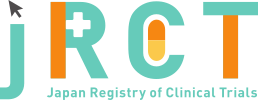臨床研究等提出・公開システム
|
Oct. 18, 2024 |
|
|
Oct. 18, 2024 |
|
|
jRCTs041240108 |
A study of the efficacy and safety of sarcopenia therapy in Physically Inactive Patients with Type 2 Diabetes Mellitus (MIRAI-SARCOPENIA) |
|
Efficacy of sarcopenia treatment in patients with type 2 diabetes mellitus |
KOYAMA HIROYUKI |
||
Nagoya City University Hospital |
||
1, Kawasumi Mizuho-cho, Mizuho-ku, Nagoya, Aichi |
||
+81-52-853-8211 |
||
hk0515@kuhp.kyoto-u.ac.jp |
||
KOYAMA HIROYUKI |
||
Nagoya City University Hospital |
||
1, Kawasumi Mizuho-cho, Mizuho-ku, Nagoya, Aichi |
||
+81-52-853-8211 |
||
hk0515@kuhp.kyoto-u.ac.jp |
Recruiting |
Oct. 18, 2024 |
||
| 20 | ||
Interventional |
||
single arm study |
||
open(masking not used) |
||
uncontrolled control |
||
single assignment |
||
treatment purpose |
||
1) Patients 65 years of age or older at the date of enrollment |
||
1) Patients with hyperglycemic emergencies, severe infections, major surgeries, or serious trauma within the past 6 months |
||
| 65age old over | ||
| No limit | ||
Both |
||
Type 2 diabetes |
||
Drug Therapy |
||
Change in skeletal muscle index |
||
Amount of change in the following items before and after protocol treatment |
||
| Clinical Research Management Center, Nagoya City University Hospital | |
| rinshou-kenkyu@med.nagoya-cu.ac.jp, Aichi | |
+81-52-853-8346 |
|
| rinshou-kenkyu@med.nagoya-cu.ac.jp | |
| Approval | |
Oct. 02, 2024 |
No |
|
none |
